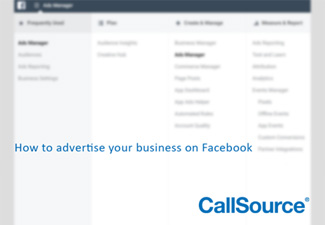The key to running Facebook ads is matching the right audiences with the right creative to trust that your campaigns will generate profit.
If you are reading this, you likely own or work for a business that targets niche customers online. You want to know exactly how to find your ideal customers and you want to run profitable campaigns that don’t keep you up all night worrying if you’ve wasted your money.
“Facebook Advertising is Hard” – Vantage
If making a profit from Facebook ads sounds possible for you and your business, then this article can help. I think most business types can utilize Facebook ads profitably, but Facebook is just a channel – and not every channel will work for everyone. I’ve put together a list of some aspects of Facebook ads that I consider “challenging,” so if your business fits into any of the items in the list – save yourself some time and effort and quit. I’m kidding! But honestly, just be prepared to buckle your seat belt because businesses with items on this list just need to work a little harder than most:
- You are B2B.
- Your target audience is sub 25-years old.
- You’ve never advertised before.
- You have no way (or it’s too expensive/time consuming) to produce creative.
- Your audiences are so niche that you cannot target them in Facebook (and you do not have a substantial marketable list of your target audience).
- You do not have a website.
- You cannot afford to achieve (50+ per week) of any Facebook result objective.
Great, now that we have that out of the way it’s worth noting that while most Facebook marketers have their own ‘best strategy’ and stories of incredible success, you are ultimately on your own with figuring out what will work best for your business. I recommend that even if you’ve considered hiring an agency or a consultant to run your ads for you that you give it a try yourself first. That way, you will understand what they are telling you and you can understand the gravity of what is required.
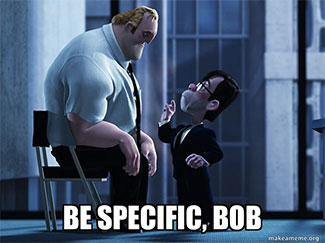 The biggest and most important tip I can give you is to be specific. With Facebook ads, it is very tempting to generally target your audiences, to speak to them with general language that works for everyone, and to assume that if it doesn’t work on a broad scale it won’t work on a specific one. That’s all false. You’ll end up spending inefficiently before you really understand what is working and what is not.
The biggest and most important tip I can give you is to be specific. With Facebook ads, it is very tempting to generally target your audiences, to speak to them with general language that works for everyone, and to assume that if it doesn’t work on a broad scale it won’t work on a specific one. That’s all false. You’ll end up spending inefficiently before you really understand what is working and what is not.
Lastly, I’m not the authority on Facebook ads. The success is up to you. Facebook changes rapidly; the books are great until they aren’t, the guides are helpful until they aren’t, and it is not a one-and-done operation, so stay up to date.
Start with the ideal customer and work backwards
What makes up my ideal customer?
Your ideal customer is a combination of physical traits (demographics), actionable traits (behaviors), and perceptions (psychographics). If you are a barber for men’s haircuts your clients might look like this:
- Has a need for men’s hair services.
- Has hair or something to service.
- Can afford your hair services.
- Is near to your locations.
- Regularly attends or intends to visit a barber.
- Is available during the business hours of the barber shop.
- Trusts someone else to perform barber services.
- Has been to the barber shop already.
- Has reviewed or is positively inclined towards the barber shop.
- And so much more…
Think about your ideal customers: which pay the most, which are the easiest, which cost the least, which visit frequently, and which visit often? What attributes, characteristics, and interests does your ideal customer tend to have that makes them a better customer for you and a better experience for them?
If all of this is too high level, don’t get too stuck on it. You build out an ideal customer profile once or more every year and you move on. If you do not know who you are going to try to target with ads then you shouldn’t bother running ads.
After completing this exercise, you might even start to have some ideas. Before you jump the gun, it’s not enough to know who you are targeting as much as the specific problem you can solve for them. In our barber example, it’s not enough to advertise that you are a barber. Telling them who you are is all about you and does nothing for someone who sees your ad. You need to tell them what you can do for them – and be specific!
Breaking down your ideal customers into the three funnels so you can target their pain.
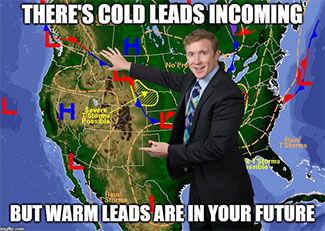 There are three types of audiences: cold (usually the top of the funnel), warm (usually the middle of the funnel) and hot (usually the bottom of the funnel). A funnel is a simple way to visualize and map out your strategy of Facebook ads so that you can target your niche audience based on their receptiveness to your business.
There are three types of audiences: cold (usually the top of the funnel), warm (usually the middle of the funnel) and hot (usually the bottom of the funnel). A funnel is a simple way to visualize and map out your strategy of Facebook ads so that you can target your niche audience based on their receptiveness to your business.
A cold audience would be your ideal customers who: may be unaware of what you do, who you are, that you even exist, and that have a problem you can solve. They may have no idea that you exist (or that services like yours exist).
“Everyone knows that dealerships, plumbers, and doctors exist!”
Wrong. Sure, they know that those things exist, but they might think that all dealerships are frightening, all plumbers are scams, and all doctors are wastes of time. They might not be aware that you are different and offer something exclusive that goes against the industry. What sets you apart?
A warm audience would be your ideal customers who: are aware of what you do, that you exist, and who might even see you as a business that can solve a problem they may or may not yet have. They may know about you but they have not done business with you yet.
“Everyone knows that dentists pull teeth!”
Wrong again. They know that dentists have something to do with teeth or the mouth, but they might not realize that dentists should be cleaning your teeth at least every year. They may not know about x-rays and if they even have the right insurance for a dentist. Navigating everything as a customer can be frustrating and confusing. What can you do to help them?
A hot audience would be your ideal customers who: have visited your business or website and they have a need for your products or services right now. They may be ready to purchase but they could also be comparing you against your competition.
“Everyone knows to call an HVAC repair when their heater goes out in the winter!”
Do they? After winter ends they may just avoid the problem until next year. If they feel they can do without, they will not call someone. There might be someone they know who knows just enough to fiddle with the heater to try to get it working again. As a customer, they may not see their problems as a problem worth solving. How can you help them see the issues?
Finally, it’s worth considering your purchasers, your clients, and your current and existing patients. They know about you, you’ve helped them before, and they may use you again in the future. The questions are: did you earn their repeat business and how much of it did you earn?
“My customers know about all of my products and services!”
Probably not. Most customers have tunnel vision into the solutions that solve their immediate problems. They might not even need that much of a push to be a customer of yours. However, they may need a nudge towards your additional services if you could find out they have those problems as well. Why aren’t your customers talking about you to others and asking about your additional services?
The pain that your customers are feeling is very real to them. The severity of that problem for them will dictate how they react to that pain. A lot of pain usually means they are willing to pay more, want it solved faster, and do not want it to ever return. A little bit of pain means they can procrastinate finding the solution or someone else will take care of it. They think they can endure it, and they will ignore it.
Make a list of the pain your customers are experiencing but put it into a sentence such as: “If I could only find a (men’s barber) to (cut my hair) then I could (look great for my date this weekend).” This exercise will help you identify the pain but also the reasons behind it so you can create an effective ad that talks about them, on their terms, and with a relevant message. Finally, put them into the audience segments: cold, warm, hot, and your current clients. Within those groups, audiences with high behaviors are your standouts: more page views, more clicks, form fills, calls, and purchases will suggest the best of the best.
Creating relevant advertisements for your audiences that drive specific results.
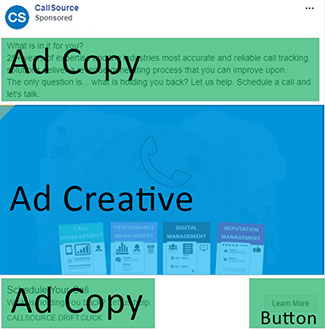 Facebook Advertising is a tool to help you reach your audiences with a relevant advertisement. The most important elements of a Facebook advertisement are composed of two parts:
Facebook Advertising is a tool to help you reach your audiences with a relevant advertisement. The most important elements of a Facebook advertisement are composed of two parts:
- The Ad Copy – the words you use in your advertisements.
- The Creative – the images, visuals, videos, and colors you use in your advertisements.
Tip: If your ads aren’t working, it’s likely not your audiences’ fault – it’s your ad copy and creative.
Remember from our audience explanation above, you need to be specific. This matters even more with advertisement designs. Don’t get caught up in how long your copy is, how many emojis you have, and how many images, buttons, or how few words you use. The importance of advertisement design is all about the specific message that your specific audiences are interpreting.
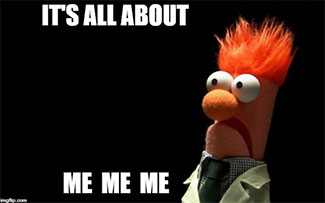 Relevance is second in importance to being specific. You need to use the words that your customers understand. Telling your customers that their condenser could be broken is one way to alienate customers who don’t understand what that is. You have to talk to them in a way they understand, and that might even mean being comical, self-deprecating, or being completely honest. It’s less about an elevator pitch and more about making sure you aren’t losing people too early.
Relevance is second in importance to being specific. You need to use the words that your customers understand. Telling your customers that their condenser could be broken is one way to alienate customers who don’t understand what that is. You have to talk to them in a way they understand, and that might even mean being comical, self-deprecating, or being completely honest. It’s less about an elevator pitch and more about making sure you aren’t losing people too early.
Talk to your customers directly. Avoid talking about yourself and talk to them about them, focusing on the specific reasons they are experiencing something painful.
Warning: Facebook will disapprove advertisements that degrade, call out, and ‘assume a customer’s condition’ in a negative light – so frame your message around the positives and not the negatives.
Does your service solve a specific problem for this audience? You better mention that. You want to encircle your customers in your value proposition:
- What do you do specifically?
- Who do you help specifically?
- What are your exclusive benefits (versus the competition)?
Look at the customers you’ve mapped, their pains, and how you could help them. What makes the pain they are experiencing more of an immediate need for them to solve? How can you enlarge the solution you have for them (in their eyes)? Often price discounts are not enough.
Balancing professional creative with content you made yourself.
There is a handyman that I started following that took pictures of every project that he worked on. He took pictures of what it looked like before and communicated the feelings and sentiment of the owners who wanted it fixed. After that, he takes multiple pictures along the journey until the project is completed. By following his feed, you can see home projects transformed by his work. I estimate that this takes him less than 30 minutes per project but it drives a ton of engagements on his posts. He does this… ad free.
Content is king. If you haven’t heard this yet or hear it and think, “That’s great but how could my business do that?” then start thinking harder. Every business can create value (profit, sales, revenue, etc.) using content. Part of the content that drives the most engagements is the creative.
Every creative should be framed around having:
- A headline (either visually or with the copy) summing up one sentence that everything is about.
- A visual that describes, illustrates, or highlights the message you are communicating.
- Subtext that moves the person to a desired (specific) action to take.
Ask yourself, what is your purpose with this creative? If it’s, “well I want them to click it,” then ask yourself: will your targeted audience understand that is the clear next step? Imagine their boss, their spouse, or their kids are calling their name in the other room. Is your message compelling enough for them to click anyway, for them to save it for later, or to comment/engage with it?
Use the five second rule.
The five second rule means taking five seconds to look at your advertisement (its copy, the creative, everything) and then taking it away. Now, think for a second and answer the following (value proposition aligned) questions:
- What does this company do?
- Who does this company do it for?
- Why should you use this company?
Sure, as the person who created the ads you might be able to answer all of those. But try to stand in the shoes of your target customers… could they answer those? Sometimes the best people to ask are your coworkers or someone who isn’t knowledgeable about your business at all (your ad Guinea pig).
There are various types of creatives with effort costs to customers:
- Images (high cost to customer)
- Videos (moderate cost to customer)
- Gifs (low cost to customer)
- Carousels (moderate cost to customer)
Every click, second, and time the customer has to think has a cost to the customer. An image might have a lot of cost because they have just one frame to understand everything you need to tell them. If it requires them to think critically… you probably lost them. Videos can be long, so while it helps them understand something it also might not be worth their time to sit through the whole thing. A gif (or animated images) are relatively low cost to a customer but have to be well designed. Carousels allow the customer to explore various images but it requires clicks… and most customers aren’t going to click around unless they’ve been persuaded to.
Lean towards user generated content (UGC).
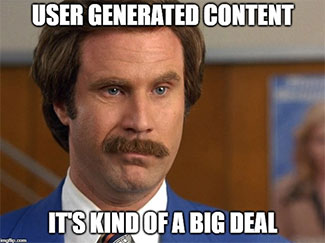 Designing an advertisement from the beginning that is a winner is not likely. You may get it by the 10th, 20th, or 1000th try… and that is part of what makes Facebook Ads hard. The hard part should not be spending $10,000 or more on a video or images. When starting out, use your phone, take pictures, keep it low budget, and test. You want to be spending your money on testing the audiences, testing some creative types, and tweaking your messages in this order:
Designing an advertisement from the beginning that is a winner is not likely. You may get it by the 10th, 20th, or 1000th try… and that is part of what makes Facebook Ads hard. The hard part should not be spending $10,000 or more on a video or images. When starting out, use your phone, take pictures, keep it low budget, and test. You want to be spending your money on testing the audiences, testing some creative types, and tweaking your messages in this order:
- Testing Creative
- Tweaking Message
- Testing Audiences
Prioritize your efforts in getting the message and creative aligned until you get some wins. That might mean making content that doesn’t look like it was taken by a professional… and that’s perfectly okay!
Choosing the right Facebook ads objective for my campaigns.
Your budget should match your objective. You should be targeting (50) yes… fifty results of whatever objective you choose per week to unlock the optimization of Facebook fully. You can do less, especially at first, but have in mind the target of achieving whatever objective you select at least (50) times per week.
Assuming you have three options: engagements, clicks to website, and conversions, the costs of running those Facebook Advertisement campaigns will vary drastically:
- Engagements – likes, shares, comments, plays (videos), and clicks.
- Clicks to Website – clicks that go to your website where the pixel is installed that will fire a page view event (meaning they made it to your website and landed there).
- Conversions – a specific event setup by you either on a thank you web page or from a conversion event (such as phone calls, form fills, chats, emails, etc.) where a lead is captured, an appointment is set, a purchase is made, or whatever else you deem to be a ‘conversion.’
Of those three, the least expensive is the Engagements. These are often best for your cold audiences and I would test lots of advertisement designs to see what resonates with each of your target audiences. Every campaign should have only 1 goal (1 objective) and if that’s engagements… that is all it should be doing. You can then build your audiences of people who engaged with you for the warm (middle of funnel) campaigns.
The second most expensive tends to be the clicks to website. These are often best for your retargeting audiences made up of people who have engaged with you already. You want to send these visitors to specific pages on your site that aim to solve their pains, educate them about you, and ultimately convert them into leads or possible customers.
The most expensive of these tends to be the conversions (and yet it’s the most popular choice). Who doesn’t want conversions? You don’t – when they are too expensive. This is why you want to use the audiences of people who have engaged with you and who have visited your high-value pages on your website (possibly 3rd party audiences from your CRM or database) so that you message resonates with people in the hot (bottom of funnel) segment. These people are ready to buy but aren’t sure about buying from you, buying right now, and you need to prove it to them. You want to convert these into purchasers.
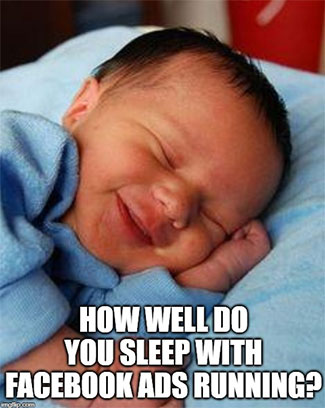 At the end of the day:
At the end of the day:
- Are you utilizing the audiences you’ve already spent resources on later down the funnel?
- Are you achieving what you set out to do?
- Are you helping people solve their problems?
- Do your customers care about solving their problems?
- Are you using Facebook Ads – and are you sleeping well at night?
Making a profit from Facebook Ads
Unfortunately, not everything is a science with Facebook advertising. I would like to tell you that if you followed a specific ‘recipe’ that you could be guaranteed incredible results but that’s not always the case. I absolutely believe that if you follow the guidance that I’ve laid out that you can make a profit but there are some ‘pro-tips’ that you should know if you want to scale that profit to 10x, 100x, or more.
“Facebook’s algorithm is flawed because the intelligence behind Facebook’s software is fundamentally human.” – Will Oremus (Slate Article)
There is a divide between what you can control that will impact your success: the creative, the message and copy, and the audiences… and what you cannot control. You cannot control the algorithm that serves the content in Facebook. You can target geographically, by interests, by custom and pixeled audiences, and by some proprietary tools within Facebook. Here is a handy article with an infographic of the things you can target. You get some control but you do not get enough to dictate the serving of your ads as much as you think.
When an advertisement has too much text, when ads start to perform poorly (or well), and who within your audiences will see your advertisements first… is somewhat dictated by the people who login but is fundamentally driven by the Facebook Feed Algorithms. Part of that is the reputation your advertisement account has with Facebook: based on how much you spend, how all your active ads have performed historically, and how you have performed from ads not even active but still in your account.
Not every conversion is the same.
When it comes to the most basic type of form conversions out there, everybody should understand that for every field on a form that you ask = there is a cost. A form with two fields is low cost while a form with eight fields is higher cost.
This extends beyond forms into phone calls, chats, emails, and in-person types of conversions. They all have a cost. Some are more scalable and less scalable to your business so they have an added cost. When you select your objectives you need to make sure you can (or in the future) achieve (50) of those results per campaign, per week.
We deal primarily with businesses who place a lot of value in a phone call. So for them a phone call has a high value to it. Conversely, a phone call might also mean a high cost because some website visitors and customers go out of their way to avoid a phone conversation. Businesses love phone calls because you are talking to a potential client live, you can hear them speak, and a lot of information is passed between the callers.
Map your business to metrics to achieve profit.
To achieve objective results in a campaign you have to measure each occurrence. If that’s phone calls you need to make sure that you are reporting the calls that came from those campaigns. You need to make sure that you are pushing that data (either by uploading the csv) or with a tool to push those conversion calls back into Facebook.
After you generate the result you need to be measuring the next pivotal step. In terms of calls, leads, prospects, form fills, chats, etc… that is usually an appointment, a demo, or a sale itself. Whatever the steps are you should map them.
Then ask yourself these questions:
- What is my result (conversion) to lead ratio? How many conversions end up as leads?
- What is my cost per lead?
- What is my lead to opportunity ratio? How many leads end up as opportunities?
- What is my cost per opportunity?
- What is my opportunity to close (sale) ratio? How many opportunities are closing?
- What is my cost per sale?

Take the initial sale revenue and subtract the cost to get a 1-month or 1-sale profit. If you sell a subscription, then take the lifetime value revenue and subtract the lifetime costs and the acquisition costs. Profit is what you make (revenue) minus what you spent (expenses). This should make sense to you and to your business so make sure it’s measured correctly and you’ve got profit.
Final Thoughts
If you read all this, you likely own a business or work for a business that targets niche customers online. You now have the direction you need to find your ideal customers within Facebook’s advertising platform. You want to run profitable campaigns that don’t keep you up all night worrying if you’ve wasted your money but you don’t want to die on the sword wasting money until you get profit. If you monetize your efforts around the most important elements of Facebook Advertising, you will find success:
- The Creative
- The Copy
- The Audience
I’m not sure that Facebook Ads make sense for every business all the time but there are so many people on Facebook that it does represent a valid channel for acquisition. The biggest and most important tip I can give you is to be specific.
Have feedback, thoughts, or ideas to share? Leave a comment below.

